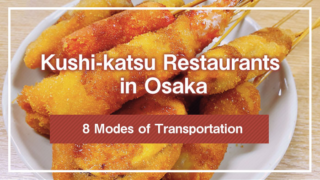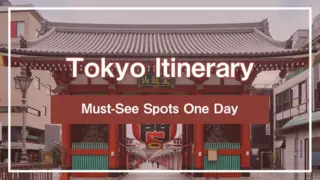Nara is an attractive place that can be visited on a day trip from Kyoto or Osaka. By train, you can travel directly from Osaka’s Namba or Umeda stations to Nara Station or Kintetsu Nara Station without needing to transfer. Moreover, since Nara’s major tourist spots are relatively concentrated, you can explore them efficiently.
Nara boasts numerous attractions, including shrines and temples registered as World Heritage Sites or National Treasures, and historic streets from the Edo period. It is definitely worth a visit. For those who want to enjoy the Great Buddha of Nara or interact with the deer in Nara Park, be sure to refer to this article’s model course for a day trip.
1.Guide on How to Travel from Major Areas in Osaka to Nara
今朝の境内の様子です。
— 華厳宗大本山 東大寺【公式】 Tōdai-ji Temple (@todaiji) November 24, 2023
明日は真冬並みの寒さとのことですので暖かくしてご参拝ください。#奈良 #東大寺 #大仏殿 #鏡池 pic.twitter.com/7OlSzOArpF
Generally, taking the train is the most common method of travel.
| From Osaka Station to Nara |
|---|
| If you are traveling from Osaka Station, the JR Yamatoji Line’s Yamatoji Rapid Service is convenient. It takes 52 minutes from Osaka Station to Nara Station, with no transfers needed. The fare is 820 yen. |
| From Shin-Osaka Station to Nara |
|---|
| If you are traveling from Shin-Osaka Station to Nara, take the JR Tokaido-Sanyo Line to Osaka Station, which is one stop away. From there, transfer to the JR Yamatoji Line’s Yamatoji Rapid Service. The fare is 950 yen, and the journey takes about one hour. Alternatively, you can take the Osaka Metro Midosuji Line from Shin-Osaka Station and transfer at Tennoji Station to the JR Yamatoji Line, which will take you to Nara Station. The fare for this route is 800 yen, and the travel time is also around one hour. |
| From Namba Station to Nara |
|---|
| From JR Namba Station to Nara Station, take the JR Kansai Line (Yamatoji Line) and transfer at Kyuhoji Station to the JR Yamatoji Line. The total travel time is around 50 minutes, and the fare is 580 yen. If you travel from Osaka Namba Station via the Kintetsu or Hanshin Line, take the Kintetsu Nara Line Limited Express directly to Kintetsu Nara Station. The travel time is approximately 34 minutes, and the fare is 680 yen plus a reserved seat fee of 520 yen. If you take the Rapid Express instead of the Limited Express, no reserved seat fee is required, and the travel time is about 37 minutes with no transfers. |
2.Day Trip Guide from Osaka to Nara
For a day trip from Osaka to Nara, arriving by around 9 AM allows you to thoroughly explore the popular tourist spots. In the morning, head to Nara Station or Kintetsu Nara Station from Osaka and visit Kofuku-ji, Isuien Garden, and Himuro Shrine.
In the afternoon, enjoy art at the Nara National Museum, and then visit Todai-ji, Nara Park, and Kasuga Taisha. Finally, you can shop for souvenirs and enjoy local food at Higashimuki Shopping Street to make your trip complete.
This model course is just an example. Feel free to customize your plan according to your interests.
2-1. Kofuku-ji
引用:興福寺
One of Nara’s iconic temples, Kofuku-ji is also registered as a World Heritage Site. The Five-Story Pagoda and the Eastern Golden Hall are must-sees. The National Treasure Museum houses numerous valuable Buddhist statues, including the Asura statue.
Kofuku-ji was founded in the Nara period as the family temple of the Fujiwara clan and has played an important role in Japanese history. The temple grounds contain many buildings and Buddhist statues designated as National Treasures or Important Cultural Properties, offering insight into the culture and faith of the time. Kofuku-ji is conveniently located about a five-minute walk from Kintetsu Nara Station, making it easily accessible.
2-2.Isuien Garden
雨上がりのお庭はスッキリと綺麗です。カキツバタの葉もこんなに茂ってきました。 #依水園 #日本庭園 #雨上がり #カキツバタの葉 pic.twitter.com/Au5k7q9Hkc
— 【公式】名勝依水園・寧楽美術館 (@ISUIEN_Garden) April 17, 2023
After experiencing the solemn Buddhist architecture and history of Kofuku-ji, immerse yourself in the tranquility and natural beauty of Japan at Isuien Garden in Nara.
Isuien Garden consists of two distinct gardens created during the Edo and Meiji periods. The front garden features a serene space centered around a teahouse, while the rear garden is a pond-strolling garden that showcases seasonal natural landscapes. Comparing the unique characteristics of each garden as you stroll through is quite interesting. The rear garden incorporates the borrowed scenery of Mount Wakakusa and the Kasuga Mountain Primeval Forest, offering a grand view where the garden and nature become one. Particularly during the fresh green and autumn foliage seasons, the beauty is breathtaking.
2-3.Himuro Shrine
After enjoying the serene beauty of Isuien Garden, experience traditional Japanese faith and a refreshing atmosphere at Himuro Shrine.
Himuro Shrine is a unique shrine that enshrines the deity of ice, Tsuge Inagi Oyamamushi no Mikoto, and Emperor Sudo, who was worshiped as the god of ice in the medieval period. By exploring the ancient ice storage techniques and beliefs, you can glimpse a part of Japan’s history and culture. The lush shrine grounds feature the main hall, worship hall, and icehouses, all exuding a historical ambiance. Particularly, the icehouse designated as an Important Cultural Property of Japan exudes a mystical atmosphere that captivates visitors.
2-4.Nara National Museum
無料観覧日のお知らせ📢
— 奈良国立博物館 Nara National Museum, Japan (@narahaku_PR) May 15, 2024
5月18日(土)は、#国際博物館の日 です。
この日は、なら仏像館・青銅器館を無料でご覧いただけます。
※特別展「空海」の観覧には、別途観覧料金がかかります。
来年4月29日に開館130年を迎える歴史あるなら仏像館に是非お越しください✨
#奈良国立博物館 pic.twitter.com/9uGb2yesTW
After experiencing ancient Japanese faith at Himuro Shrine, delve deeper into Japan’s rich history and culture at the Nara National Museum.
The Nara National Museum houses a vast collection of valuable artworks, including paintings, sculptures, and crafts, with a focus on Buddhist art. It includes numerous National Treasures and Important Cultural Properties. Through works spanning from the Asuka period to the Edo period, you can gain a deep understanding of Japan’s history and culture.
Nara is known as “the treasure trove of Buddhist statues,” and the Nara National Museum allows you to view archetypal statues up close. From the elegant statues of the Asuka period to the realistic sculptures of the Tenpyo era and the powerful figures of the Kamakura period, you can appreciate the distinctive beauty of Buddhist statues from each era.
2-5.Tōdai-ji
Building on the knowledge gained at the Nara National Museum, seeing the colossal Great Buddha and historic structures of Tōdai-ji in person will leave you deeply impressed. Tōdai-ji’s Great Buddha Hall is known as one of the largest wooden buildings in the world. Entering its vast space, you will be overwhelmed by its scale.
Inside the Great Buddha Hall stands the roughly 15-meter-tall statue of Vairocana Buddha (known as the Great Buddha of Nara), whose majestic presence inspires awe. The intricately crafted statue, with its serene expression, leaves a deep impression on viewers. The pedestal of the Buddha depicts the Lotus Treasury World, with its detailed carvings being one of the highlights.
2-6.Nara Park
引用:奈良公園
After being awed by the grandeur of Tōdai-ji’s architecture and the Great Buddha, relax and enjoy the vast nature and friendly deer at Nara Park. Transitioning from Tōdai-ji’s solemn atmosphere, you can unwind in Nara Park’s serene environment.
Nara Park spans approximately 660 hectares and includes World Heritage Sites such as Tōdai-ji and Kasuga Taisha, along with numerous National Treasure-class buildings. The blend of lush nature and historic structures is a distinctive feature of Nara.
Nara Park is home to many free-roaming deer. These friendly deer will approach tourists to ask for deer crackers. Feeding and taking pictures with the deer is a unique experience that Nara Park offers.
2-7.Kasuga Taisha
おはようございます。
— 春日大社 kasugataisha shrine (@KASUGASHRINE) August 20, 2023
今日の奈良市は38度とまた猛暑日が戻ってきましたね。
ご参拝の皆さまお出かけの皆さま充分な熱中症予防をして体調にお気をつけてお過ごしください。#春日大社 #奈良 #南門 pic.twitter.com/w0xTKvzkJx
After enjoying the interaction with deer and the natural beauty of Nara Park, visit Kasuga Taisha, a World Heritage Site and one of the Historic Monuments of Ancient Nara.
Kasuga Taisha is the head shrine of the approximately 3,000 Kasuga Shrines across Japan and has been worshiped as the tutelary deity of the Fujiwara clan. It offers a sense of history and tradition continuing from the Heian period.
The shrine buildings are characterized by their vivid vermilion color, contrasting beautifully with the surrounding greenery. A corridor surrounds the shrine buildings, lined with numerous lanterns. These lanterns create a magical sight when lit at night.
2-8.Higashimuki Shopping Street
After experiencing the solemn atmosphere of Kasuga Taisha, enjoy the lively atmosphere of Higashimuki Shopping Street in Nara City and look for souvenirs.
Located just a short walk from Kintetsu Nara Station, it is very convenient to access. It’s also an easy move from Kasuga Taisha, making it a perfect final stop for your day trip.
Higashimuki Shopping Street is lined with shops selling Nara specialties such as Nara pickles, persimmon leaf sushi, and kudzu sweets, making it an ideal place for souvenir hunting. The street also has many restaurants where you can enjoy local delicacies such as Miwa somen noodles, tea porridge, and persimmon leaf sushi.
Conclusion
A day trip from Osaka to Nara is entirely feasible, and we recommend visiting the area around Nara Park near Kintetsu Nara Station.
Nara Park is a place where you can enjoy beautiful landscapes throughout the year. Cherry blossoms bloom in spring, and autumn leaves color the area in fall, allowing you to experience the changing seasons. As a note, since Nara Park is large, it is best to visit in comfortable shoes. Also, summers in Nara are very humid, so prepare with items like umbrellas, hats, sunglasses, and sunscreen, and remember to stay hydrated.























